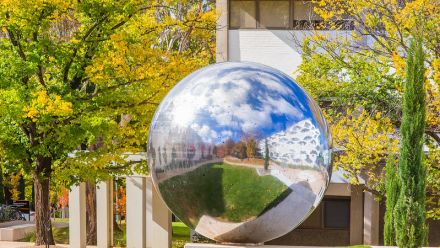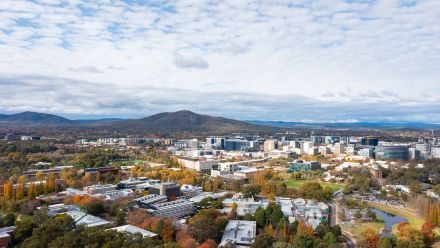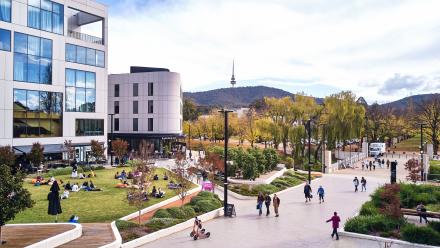Bringing prosperity to the region
Then - Intellectual foundations of APEC
When Peter Drysdale went to Japan in the 1960s it was hardly the economic power it is today.
Japan had embarked on an ambitious plan to build a modern industrial economy and the then young doctoral student arrived just in time to observe Japan's political leaders, business community and top scholars come together to rebuild the nation - and it was happening at a rapid pace.
"It was like being in an economic laboratory - Japan changed from a quite poor country to a very rich country in my lifetime," says Professor Drysdale.
"This experience was the crucible for thinking about how we should relate to Asia and what kinds of relationships we should build with the diverse economies in our region."
There were many challenges. How do you go about building economic relationships between countries which in some instances didn't even have diplomatic relations?
"The development ambitions of the region had to be thought through carefully, drawing on the academic work and intellectual assets at ANU, setting out a robust story about what would bring success, encouraging a heterogeneous group of countries to work towards common objectives that lifted their people out of poverty in as short a time as possible," says Professor Drysdale
A joint study between economists in Japan and Australia from 1973 to 1976 of bilateral economic cooperation laid the groundwork not only for a new treaty framework with Japan, but also for what became the Asia-Pacific Economic Cooperation (APEC) process that promoted confidence in freer trade and investment throughout the region.
"That was the intellectual foundation," says Drysdale.
"These ideas went up to policymakers here, in Japan and around the region, through seminars and dialogues, before crystallising into the APEC idea."
In 1980, Prime Minister Malcolm Fraser and Prime Minister Ohira of Japan were invited to host a seminar at ANU to work through how the APEC arrangement might be accepted by the economies of the Asia-Pacific region.
Such a grand idea was going to take some time to achieve.
A decade on, Prime Minister Bob Hawke proposed an intergovernmental regional economic institution that 10 months later became the first APEC meeting, attended by the foreign and trade ministers from 12 countries, including Indonesia, Japan, Korea, Malaysia and the United States.
APEC's work has seen growth soar in the region, lifting millions out of poverty and advancing free trade for Asia-Pacific prosperity.
"It's a long story, but it illustrates how the intellectual paradigms and strengths of economic thinking at ANU have contributed to policy development in our region," says Drysdale.
His latest mission is a huge first-ever joint study of the Australia-China economic relationship.
"You wouldn't try that on without being able to draw on the reservoir of intellectual assets that we have at ANU," Drysdale says.
Now - Deepening our understanding of China
The last decade has seen bilateral trade and investment between China and Australia grow at an enormous rate.
Australia has benefited enormously from China's rapid economic growth in the past, 'riding on the dragon's tail' through the biggest mining boom in Australian history. However, there is no guarantee that the two countries' future economic relationship will be as bright.
Dr Jane Golley, Associate Director of the Australian Centre on China in the World (CIW), is looking closely at this future and how Australia can best benefit from a changing Chinese economy.
"Exporting a far greater surplus of our agricultural products to China is just one example of the potential for shifting away from mining and towards products the Chinese are going to want in the decades ahead," says Dr Golley.
Dr Golley's research also looks at ways of overcoming some of the points of contention in Australia and China's economic relationship. Australians have been increasingly vocal in their dissatisfaction with the amount of investment from China that the Government allows, and China is growing wary of these mixed messages.
"The Australian public needs to think extremely carefully about what they mean by 'too much Chinese investment'. Does this mean they would like it to cease altogether? Have they thought about where else this capital might come from, or the state of the Australian economy in its absence?" says Dr Golley.
"Sharing our different perspectives can help to reduce misperceptions and their negative consequences and avoid misunderstandings about specific investment cases that can easily grow into larger diplomatic problems."


